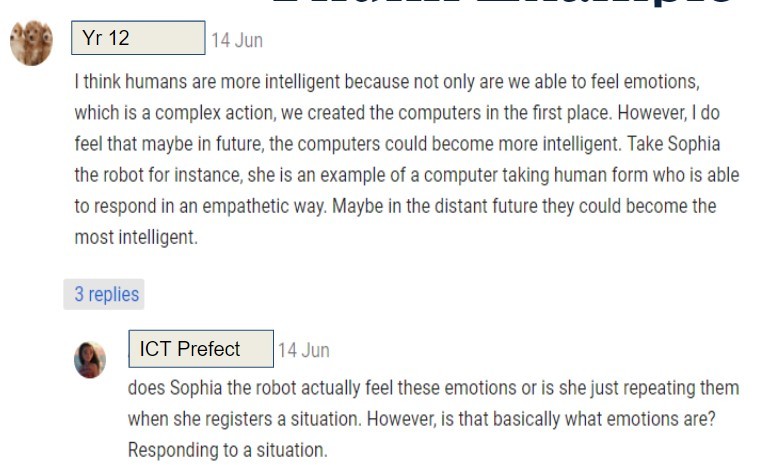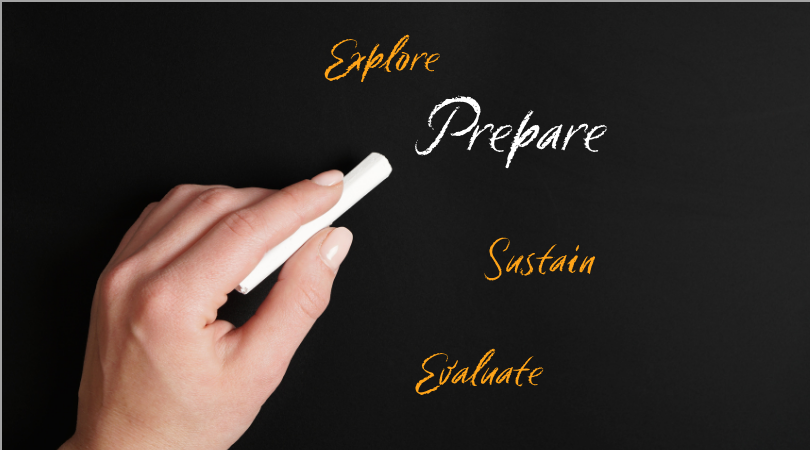Thinking Skills through G Suite for Education
In 2012 Maidstone Grammar School for Girls (MGSG) transferred our online learning platform to Google for Education, now known as the G Suite for Education.
MGGS was proud to be among the first schools to use the tools and the school was given the opportunity, as part of this, to offer feedback in its early stages that have shaped its design. There were many motivating factors for introducing Google tools;
– the fact that the package was designed by teachers and thus specifically tailored to an educational setting and, therefore, well suited to our needs;
– the opportunity to reduce the use of paper in the school and improve our sustainability;
– the potential savings in terms of both money and staff time.
However, the primary attraction was the opportunity to enhance and extend the thinking and learning of our students.
Since then, we have not looked back. In 2017, MGGS was awarded ‘Leading Lite’ status by Vitalize, and we now use Google in all areas of the school, from lessons to the management of the calendar.
Once we had navigated our way around the different aspects of G Suite, our challenge was to see how it could assist us in delivering our Thinking Skills agenda. As an Advanced Thinking School, this has remained a high priority. It was our pleasure to deliver a workshop at this year’s conference exploring ways in which we have done this and this article outlines some of those. We firmly believe that the use of the G Suite for Education enhances the use and impact of the Thinking Tools at MGGS, and below are some different ways schools can use the technology to share in this success.
1. Google Classroom Questions
This is the way we promote and discuss Thunks to ensure wide participation across all year groups. Students cannot see how others have responded until they have answered the question themselves. After submitting their answer, they can participate in discussions with others and offer feed back. The Thunks are currently selected by department Prefects and monitored by them. Staff are as willing to get involved as students leading to some wonderful discussions.

We also use Google Classroom to hold ‘silent debates’, whereby students create shared documents to complete research, followed by an online discussion around the pertinent points on either side of an argument. At the end of this debate, students can complete a Google Form posted on the Classroom stream to vote for the outcome.
2. Google Forms
Google Forms provides a versatile tool that can be used for collecting data, including MAL scale answers. They can also be used to stimulate thinking as part of a lesson; we currently use Google Forms to deliver ‘Escape Room’ experiences. Each question is placed in a different section of the form with an answer validation. Students cannot access the next question until they have answered the last correctly by conducting research or gathering information from worksheets displayed or available in the room.
3. Shared documentation
Google has its own version of a word processing document, slideshow and spreadsheet. All of these can be manipulated by multiple people at the same time, allowing for collaboration not just across the classroom, but across the school, and from home. This has cut down on the number of meetings we have needed, and we submitted our evidence for accreditation of Advanced Status through a shared Google doc with links to each piece of evidence. The very use of these tools for collaboration promotes many of the habits of mind, including, of course, thinking interdependently.
Candice Wood
Thinking Schools Coordinator
Maidstone Grammar School for Girls
See this article about MGSG and their reasoning about the thinking school approach.
There are so many ways G Suite can support Thinking Skills in school. If you would like to know more, or to come and see the tools in action, please do get in contact – Maidstone Grammar School for Girls will be happy to host.

